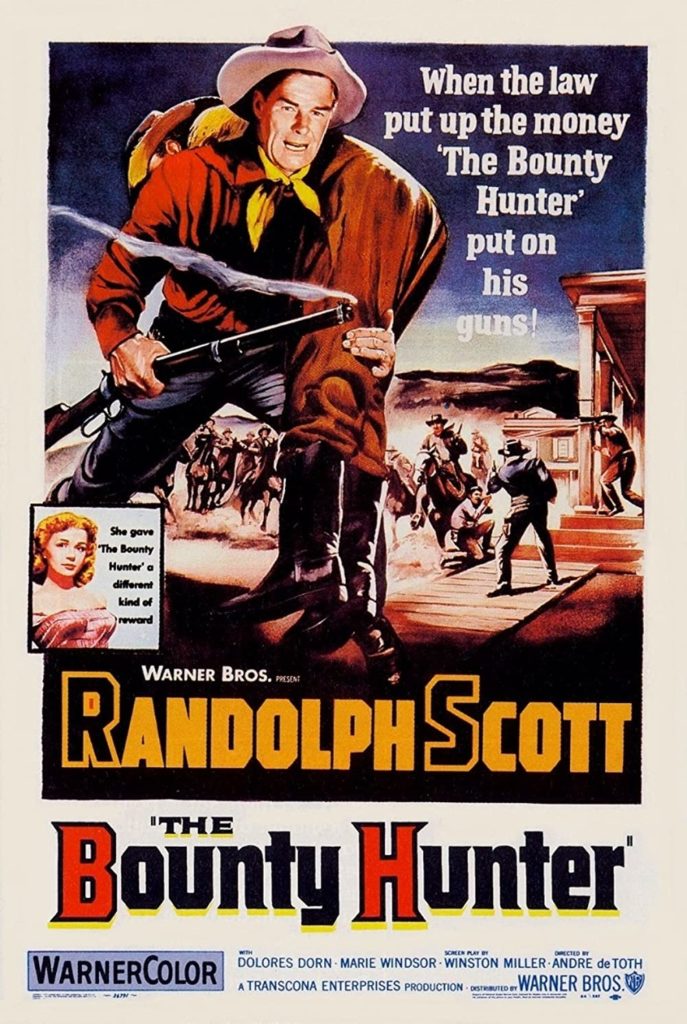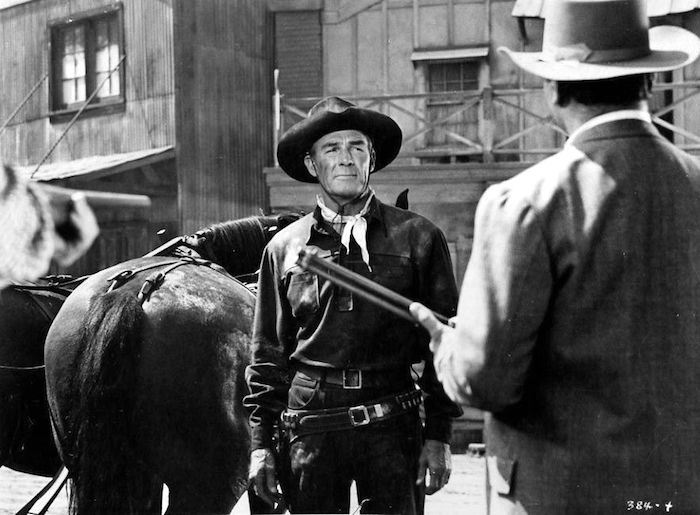Each Monday, I continue to share Western movie reviews. I have now launched a podcast about the making of Westerns and the overall filmmaking process. Click here to listen.
Week 154: The Bounty Hunter (1954)

Is it possible that The Bounty Hunter has a perfect script? I cannot think of a single flawed scene or a weak character. The narrative is lean and efficient. Even the typical Hollywood ending is cleverly written.
The last of the six collaborations between Randolph Scott and director Andre De Toth (and the third I’ve seen so far) might be one of the greatest Westerns of all time. It may not be profound like some of John Ford’s work or as masterful as Howard Hawks’ Rio Bravo, but like The Tall T this is a textbook example for how to make a Western.
De Toth is always at his best when his films are led by cynical protagonists. That is certainly the case with Scott’s bounty hunter, Jim Kipp, one of the actor’s best roles outside the Boetticher films. Early on, the character’s philosophy is established: after killing a man, he’s asked why he chose his profession and Scott responds while going through his payment, “I’m counting the reasons.” This is no righteous hero. He’s the kind of cynical lead common to De Toth pictures from his work in Noir to his war masterpiece, Play Dirty. And the film is filled with these great biting moments from Scott: spitting out the shaving cream, the line “I don’t like rude sheriffs who think they run the country”, and when offered a bribe to go away, Scott replies, “They do [work for money] but there’s one other thing. I like my work.” One other exchange I love comes when female lead Dolores Dorn criticizes Scott’s gun in comparison to her father’s medical instruments, saying it’s not a “stethoscope”. Scott responds back, “No but properly used it can be very good for the human race.” Like all great Western protagonists, he has a code, a philosophy. And like my favorites, it is not a sentimental world view.
The action in the picture is remarkable too. In the first half, we’re treated to a unique fight scene that starts with a fat man’s gun holster getting caught in the chair as he tries to stand up. Seconds later, Scott grabs the fat man and sits him on top of the store stove, setting his ass on fire. Have you ever seen such harsh and humorous action in a Western of this era? But this is the kind of dark comedic tone that you’ll find in De Toth’s best work. Later, Scott tortures one of his targets, shooting in the dirt by his feet, the walls around him, all the way trying to talk him into giving up. It’s a brutal moment that ends (no spoilers) in an unexpected, violent way. It’s also important to note that, unlike many films of the era, Scott is frequently shown reloading in these scenes and that focus on accuracy elevates these action sequences even further.
The movie’s supporting players are perfectly cast too. Unlike Man in the Saddle, another great De Toth/Scott collaboration, the film doesn’t focus so much on specific villains by pitting the entire town against the hero. The whole concept of a bounty hunter arriving to arrest someone, he won’t say who, and sending a bunch of ex-criminals into a frenzy is such a good set-up and one that the filmmakers take full advantage of. There are some true surprises in the plot, ones that I won’t even hint to, because I hope you don’t see them coming either. I will say that every actor, from Marie Windsor to Ernest Borgnine, plays their parts to perfection.
On a final note, I love Randolph Scott’s costume and plan to pay homage to it in my Blackbird Western series. He wears all black in the beginning and then, to my dismay, changes outfits for the majority of the picture. However, when he dawns black once more near the end, I saw what De Toth was up to. He’s telling us the killing is about to begin again…
Watched on Amazon


